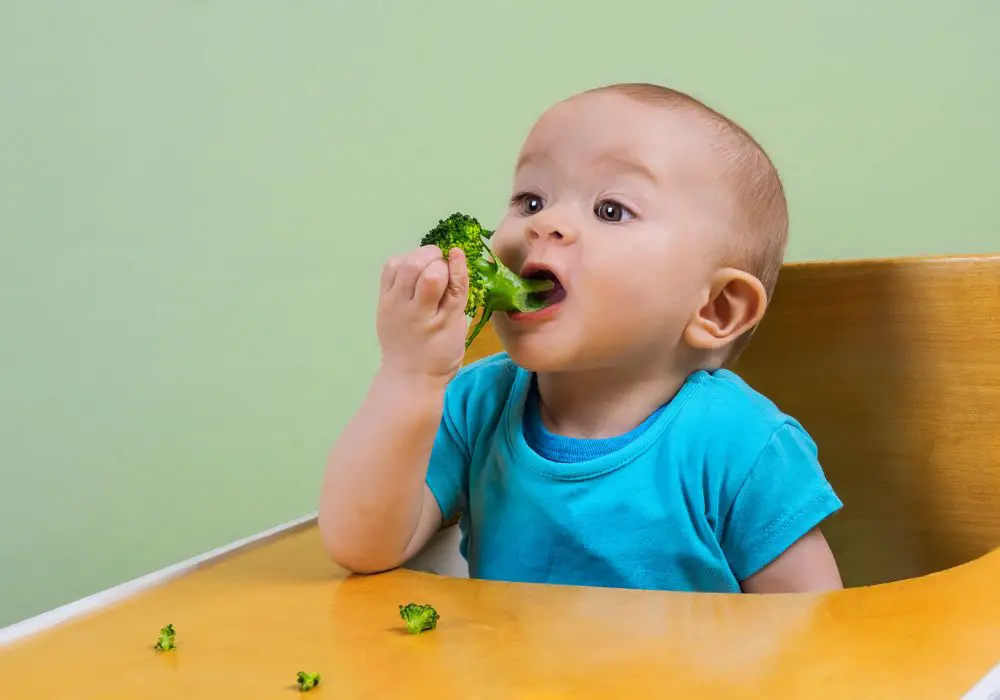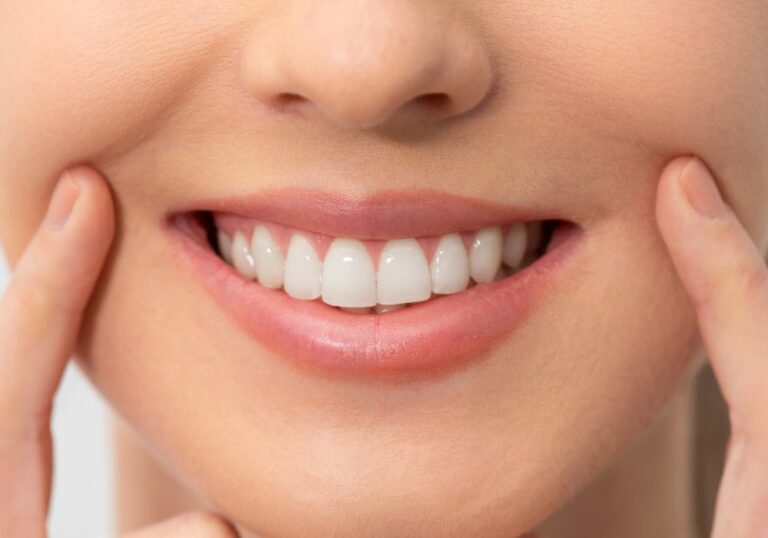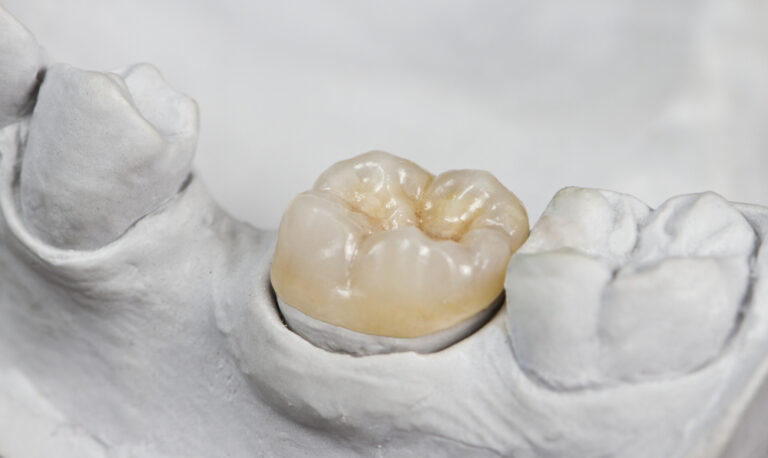Babies are born without any teeth. Yet amazingly, they are able to consume solid foods even before their first tooth erupts through the gums. This leaves many new parents curious – can babies truly chew and digest solid foods without having any teeth? The answer is yes, babies are capable of chewing and processing solid foods without needing teeth.
How can babies chew without teeth?
Babies are born with strong primitive reflexes and oral motor skills that enable them to effectively feed on milk and also start solid foods when developmentally ready. Here are some of the ways toothless babies can handle chewing:
Tongue movement
A newborn baby’s tongue structure is quite different from an adult’s tongue. An infant’s tongue has deep grooves, folds and ridges on the surface which provide traction to hold on to milk and food. The tongue makes rhythmic, undulating wave-like movements called peristalsis that allow it to manipulate food particles and propel the food bolus to the back of the mouth for swallowing. This natural pulsatile motion enables the tongue to mash and grind food against the roof of the mouth even without the presence of teeth.
Powerful gum pads
A toothless baby’s gums are well-padded with dense fibro-fatty connective tissue. The gums act as a cushiony chewing surface against which food can be mashed and broken down. The gum pads are also extremely robust and can withstand the friction of fibrous foods moving against them. The bony gum ridges along with the fleshy gum tissue provide a powerful chewing platform for babies before teeth erupt.
Up-and-down munching motion
Toothless babies have an up-and-down munching or chomping motion rather than the rotary grinding motion of mature chewing. This helps them gnaw, mash and break down foods using their tough gum pads along with bony jaws. The hinge-like opening and closing movement allows the upper and lower gums to come together, compressing food particles against the hard palate and effectively breaking them down into swallowable bits.
Abundant saliva flow
Babies produce copious amounts of drool which helps lubricate food particles during chewing and swallowing. The abundant slippery saliva thoroughly coats bits and lumps of food, making it easier for the tongue and gums to break it down into a smooth, manageable texture for swallowing. The saliva also contains enzymes that help to digest carbohydrates and fats in foods.
Strong swallow reflex
Infants have a pronounced swallowing reflex right from birth that is triggered as soon as the tongue pushes the food bolus to the back of the mouth. This involuntary reflex causes the food pellet to quickly pass from mouth to stomach along the esophagus without entering the airway. The strong swallow reflex protects toothless babies from choking while chewing.
What foods can babies eat without teeth?

With their amazing natural abilities, babies can consume a variety of foods even without the need for teeth. Some safe, healthy first solid foods for toothless infants include:
- Very soft ripe fruits like banana, avocado, peach, pear, well-mashed jackfruit.
- Well-cooked vegetables like butternut squash, sweet potato, pumpkin, green beans, carrots.
- Thinned out cereals – single grain iron-fortified baby cereals like rice, oat, barley or multigrain.
- Smooth meat purees – well-cooked and pureed chicken, beef, pork, lamb or fish.
- Full fat Greek yogurt, cottage cheese.
- Soft breads, crackers or puffs that dissolve easily.
- Soft boiled egg yolk, tofu.
- Custards, puddings, yogurt.
The key is to offer foods that can be gummed or dissolved easily in the mouth. Foods should be mashed, minced, thin pureed, or adequately softened before serving to infants. Hard, crunchy foods like raw apple slices, whole nuts or popcorn can pose choking hazards for toothless babies. Parents should always supervise feeding times for infants and watch closely for any signs of gagging, coughing or choking.
At what age do babies start chewing effectively?
Here is an overview of the milestones in chewing ability that babies achieve in their first couple of years:
- 0 to 4 months – Newborns can only suckle liquids and swallow. No chewing happens at this stage.
- 4 to 6 months – Babies develop up-down munching motions and can begin exploring semi-solid foods. They can consume smooth, runny purees.
- 6 to 8 months – Infants start actively using their jaw muscles for mashing. They can handle thicker, minced purees with soft lumps.
- 8 to 12 months – Positional chewing emerges where babies learn to move food to the side molars. Finger foods are managed along with mashed foods.
- 12 to 24 months – Rotary chewing action starts to develop allowing babies to bite off pieces and chunks. A wide variety of solids in different textures can be handled.
In the first 4 months, infants do not have any chewing abilities and can only nurse or take bottled liquids. Around 4 to 6 months, the initial up-and-down munching motions emerge allowing babies to take in smooth purees. As the jaw muscles strengthen, positional chewing develops and by 12 months, most babies have mastered eating finger foods and minced solids in addition to purees. From 1 to 2 years, mature rotary chewing evolves allowing babies to bite off pieces and transition to a complete table food diet like older children and adults.
When do babies normally start teething?

While babies are born toothless, most infants get their first tooth around 6 to 10 months of age. However, teething timelines can vary quite a bit among normal healthy babies. Here is an overview of the usual eruption schedule for baby teeth:
- 6 – 10 months – The two bottom central incisors are typically the first teeth to emerge into the mouth.
- 8 – 12 months – Next, the four upper central incisors cut through along the top gumline.
- 16 – 22 months – The first molars erupt on either side of the mouth near the back, both on upper and lower jaws.
- 13 – 19 months – The lower lateral incisors, which flank the lower central incisors, start coming through at this stage.
- 20 – 31 months – The upper canines, also called eye teeth or fangs, emerge in the upper jaw.
- 17 – 23 months – Around this time, lower first molars erupt alongside the lower jaw behind the central and lateral incisors.
- 23 – 33 months – The upper first molars emerge on either side of the upper jaw right behind the upper canines.
- 25 – 33 months – Finally, the lower canines erupt to complete the set of 10 teeth in each half of the jaws, completing the set of 20 primary teeth.
While most babies have their full set of 20 baby teeth by age 3, some children may get them a little earlier or later. The eruption timeline can vary based on factors like birth weight, nutritional status and family history. These milk teeth or primary teeth help babies transition to finger foods and more varied textures. They also aid in speech development while saving space for permanent teeth that replace them years later.
Do teeth help babies in speech development?
Teeth do facilitate speech development in babies and toddlers but are not absolutely essential at the outset. Here are some of the ways teeth support clearer speech:
- Teeth shape the oral cavity and guide proper tongue placement for articulating different sounds.
- The upper front teeth enable clear pronunciation of s, z, f, v, th and l sounds by contacting the lower lip.
- The molars and canines facilitate chewing motions needed to produce m, n and ng sounds.
- Sharp edges of teeth help distinguish t, d sounds.
However, babies can readily babble, vocalize and say basic words without having any teeth. The physical ability to grasp and pronounce words has more to do with oral motor control and coordination of the lips, tongue and palate rather than tooth eruption. With practice and parental coaching, infants can be taught to approximate words and improve speech clarity even before getting teeth. However, speech often becomes more distinct once the front teeth erupt and mature chewing emerges with molars.
Do teeth make starting solids easier for babies?
The American Academy of Pediatrics recommends introducing solid foods around 6 months of age. Teeth do not need to have emerged in order to start solid feedings. However, getting teeth typically makes the transition to solids a little easier for both parents and babies. Here are some ways teeth aid with eating solid foods:
- The incisors facilitate biting off pieces and cutting up finger foods.
- The molars grind, mash and chew food particles to break them down and smooth out lumpy textures.
- Teeth help move and position bits of food from the middle of the mouth towards the grinding surfaces.
- The canines help shred and tear meat chunks and other fibrous foods.
With no teeth, babies cannot bite pieces off larger foods. But they can capably eat spoon-fed purees, minced foods, well-mashed finger foods and soft solids. By 8 to 10 months, most babies have developed the jaw control needed to munch soft lumps and minced consistencies even without teeth. Once the first teeth emerge, babies are able to expand the variety of foods and textures they can manage. But the early teeth are not pivotal for starting complementary foods at 6 months.

Frequently Asked Questions
1. What if my baby refuses textured foods and only wants purees without teeth?
Don’t be concerned if your baby shows a strong preference for smooth purees and rejects lumpier textures in the beginning. Keep offering mashed/minced foods on a regular basis along with milk feeds. Go slow and keep the textures comfortable for your infant while progressively increasing the challenge. Avoid forcing though. Follow your baby’s hunger cues. Consult a pediatrician if food refusal persists and affects overall nutrition.
2. What kinds of foods pose choking risks for toothless babies?
Whole grapes, raw carrot rounds, pieces of apple or uncooked corn kernels can pose choking hazards as they are hard and can block the airway. Sticky foods like gummy bears, marshmallows, globs of nut butter can also be problematic. Chewy foods like meat chunks, bagels, bread crusts are difficult to break down. Consider the shape, size and texture of foods and monitor during feeding.
3. Is it necessary to clean my baby’s gums before teeth come in?
Yes, gently wiping the gums after feeding is recommended even before teeth begin to erupt. Using a soft wet washcloth or specialized rubber finger brush, remove any excess food debris and bacteria from the gum pads. This helps reduce the chances of cavities forming once teeth emerge through the gums. Avoid using toothpaste until at least the first tooth is visible.
4. What natural remedies can temporarily relieve teething pain in babies?
Gently rubbing swollen, tender gums with a chilled teether or wet washcloth can provide relief without medication. Frozen banana or carrot sticks work too. Massaging the gums to increase blood flow may also help. Avoid teething gels containing benzocaine that can numb the gums and throat excessively. Use acetaminophen or ibuprofen for pain sparingly and only after discussing correct dosage with a pediatrician.
5. At what point should I be concerned about delayed teething in my baby?
The first tooth usually erupts around 6-10 months but later teething up to 12-14 months can be considered normal. If no teeth have emerged by 18 months, it would warrant an evaluation by your pediatric dentist. Delayed teething could sometimes indicate malnutrition, vitamin deficiencies, or a more serious underlying condition needing intervention. Bring up your concerns with your pediatrician and follow their advice regarding next steps.






